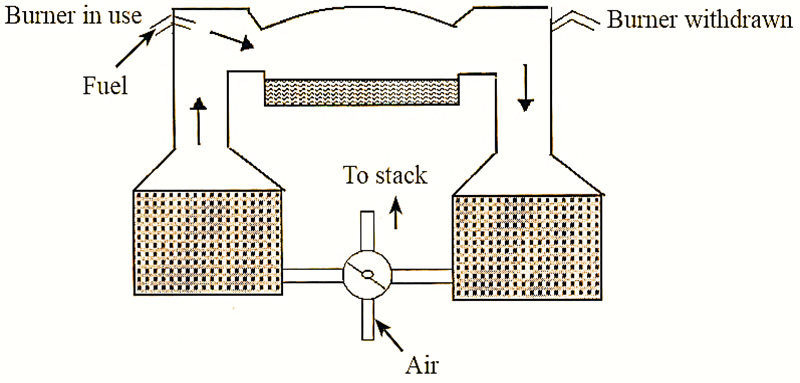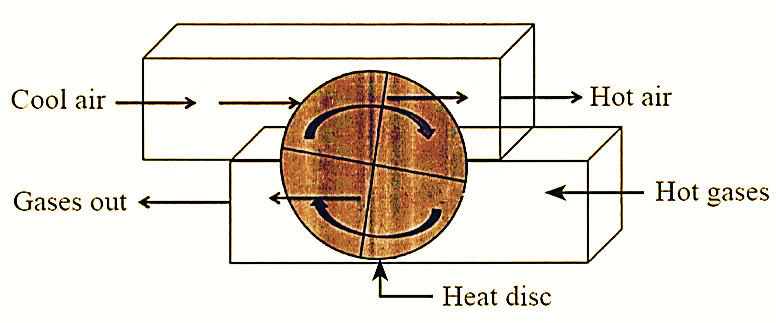A regenerative heat exchanger, most commonly called as a regenerator or capacitive heat exchanger, is a kind of heat exchanger in which the heat from hot fluid is stored in a thermal storage medium when it is passed over it. The cold fluid is allowed to flow through this medium where the heat is transferred to this fluid. Thus heat transfer in regenerators occurs intermittently.
This type of heat exchangers are most suitable for large capacities of heat transfer and are widely used in steel and glass melting furnaces. The following are the factors that affect heat transfer rate in regenerators are,
- The time interval between the flow of hot and cold fluids over the thermal storage medium.
- The conductivity of the thermal storage medium.
- Regenerator size.
Types of regenerative heat exchangers
There are two types of regenerators.
Static or Furnace Regenerator

Figure 1: Furnace Regenerator.
This type of heat exchanger consists of two chambers arranged with a thermal storage medium (Example: refractory fire bricks) in the form of a matrix. The hot gas or fluid is allowed to pass through the chamber where the medium absorbs the heat. The cold fluid or gas is passed through that chamber which absorbs heat from the medium. Two chambers are used such that one chamber absorbs heat while the other chamber transfers the heat. The direction of fluid flow is changed after a certain time. These regenerators are generally used in glass furnaces, coke ovens, open-hearth furnaces, etc. for preheating the combustion air or preheating the boiler feed water, etc.
Dynamic or Rotary Regenerator

Figure 1: Rotary Regenerator.
In this type of regenerator, a porous packing material in the shape of a disc with high heat capacity is arranged in between the two ducts in which the cold and hot fluids flow. As the disc rotates through the hot fluid, it stores heat and this thermal energy is transferred to the cold fluid. The overall efficiency of rotary regenerators is up to 85